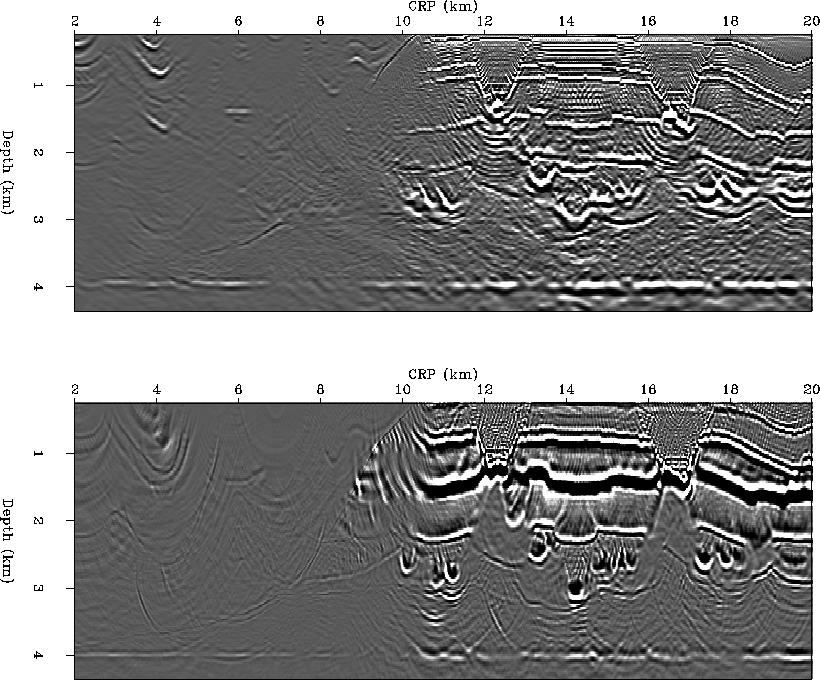 |
Figure 2 Zero offset ray parameter slices. Top: common azimuth migration of the dip direction data. Bottom: common azimuth migration of the strike direction data.
![[*]](http://sepwww.stanford.edu/latex2html/cross_ref_motif.gif) and
the strike direction common azimuth migration is in the bottom panel.
and
the strike direction common azimuth migration is in the bottom panel.
The large difference in amplitudes between the mountain side of the model and the sea side is expected because of the very different impedances that are apparent from the velocity model. For these experiments, this difference in amplitudes should not concern us greatly, as our primary consideration is the illumination, which can be examined in the areas with better impedances. The illumination problems can be seen most clearly along the flat reflector at a depth of 4 km and at the base of the salt.
Comparing the dip direction and strike direction common azimuth migration results is interesting. The strike direction result has stronger artifacts in the area from 1 to 2 km depth under the overthrust, but shows better continuity in the deeper region. Along the flat reflector at depth=4 km, the strike direction migration shows illumination problems that are different from those seen in the dip direction results. Similar behavior can be seen along the base of the salt, which is patchy in both results but is clear in different regions. The differences in illumination that are evident from these results is what drives the question: can we use these two datasets to get one model that combines the best illumination of both datasets?
 |